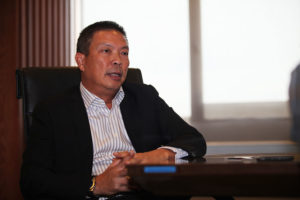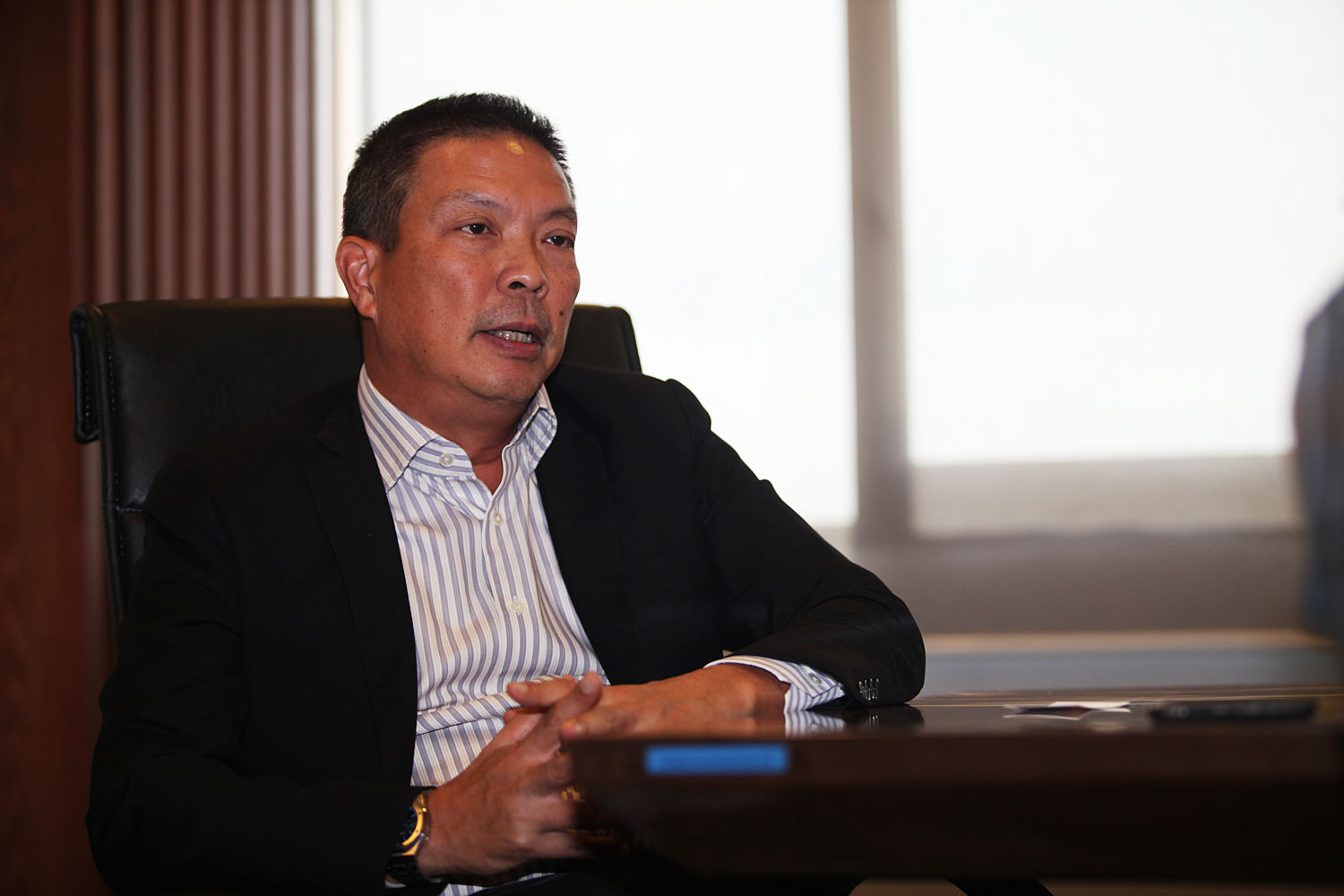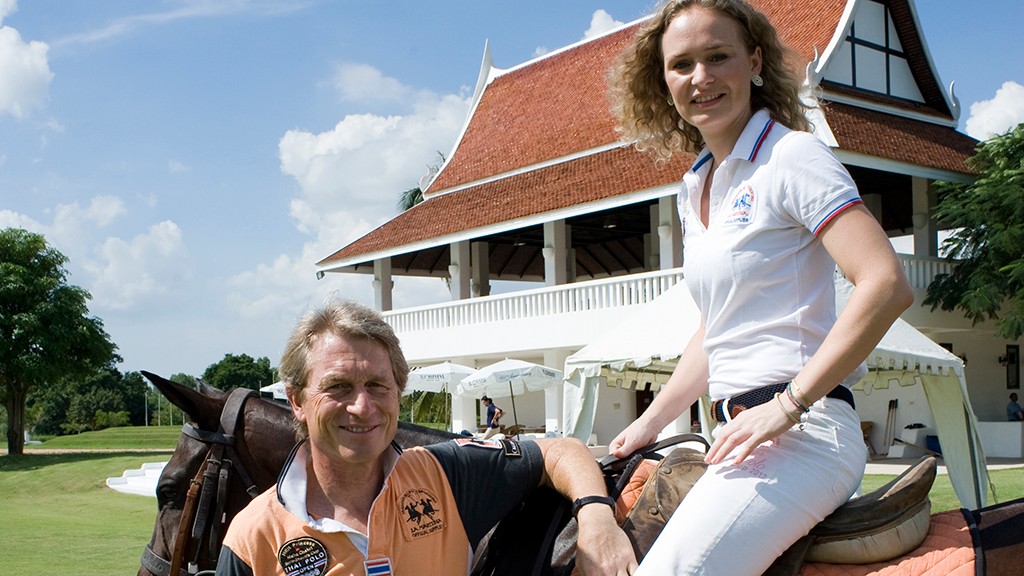
Sahakol Equipment’s Sasavat Sirison engineers a regional push
After taking the family firm public, Sasavat Sirison is digging for mining opportunities throughout Asean
Forty-nine years ago, Sahakol Engineer Co was just a local civil construction company run by the Sirison family. Some metropolitan and provincial roads provided the company with work to serve the government’s roadmap for transport megaprojects.
In 1983, the company decided to bid on construction of the country’s first coal-fired power plant at Mae Mo, Lampang, home of the largest lignite mine in Thailand and Southeast Asia.
The Electricity Generating Authority of Thailand is the operator of the mine and the power plant. Egat has awarded many construction and mining contracts to companies like Sahakol over the past 36 years.
In that time, Sahakol has become a well-known firm in Thailand’s construction and mining circles.
Sasavat Sirison is the second generation of the family to work at Sahakol, starting his career in 1988. He is the big brother of three siblings.
Mr Sasavat, 56, is full of stories about working alongside his father as Sahakol caught the wave of development in Thailand.
The Sirisons are a family of engineers. “I graduated with a degree in metallurgical engineering in 1985, then went to the United States to study at the master level in business administration and finished in 1987,” Mr Sasavat says.
At the beginning of his career, Sahakol was the main contractor for the first phase at Mae Mo.
“The first bidding of Mae Mo started in 1981 and concluded in 1983,” Mr Sasavat says, “but the first phase of development began in 1985, and I entered the Lampang site in 1988.”
The Mae Mo mine and power plant was a huge project of Egat, expected to expand power generation from 75 to 2,400 megawatts.
Local muscle
The governor during the period wanted to use Thai companies for construction to support the local private sector. Sahakol was the main contractor for the first and second phases.
“Each phase required a budget of 3 billion baht, so this value 36 years ago was massive spending for Egat,” Mr Sasavat says. “Thai companies competed with foreign construction companies. Thanks to the governor’s intention, Thai companies were selected to be the contractors for the Mae Mo site.”
Familiar names like Banpu Plc, Chiangmai Construction Co and Italian-Thai Development Plc (ITD) served as contractors for other Mae Mo phases, with Sahakol as subcontractor.
For the seventh phase, Sahakol was back as the main contractor.
“Thai contractors 30 years ago had lower capabilities in the construction sector, so Egat had to hire foreign consulting companies to study the lignite mine and power generation in Lampang,” Mr Sasavat says, adding that some came from Australia and Germany and some from Indonesia, which has many mining sites.
“With more experience and technology, Thai competitiveness has caught up with foreign companies,” he says.
By his estimates, the Mae Mo lignite mine has reserves of roughly 1 billion tonnes for power generation over 30 years.
“With the coming of renewable resources, coal consumption in Thailand could be extended longer than Egat’s projection,” Mr Sasavat says.
New lignite mines in Thailand for power generation will encounter objections from non-governmental organisations and local communities, he says, meaning mine operations will end at the Mae Mo site in the future.
“Thailand has other lignite sites in Wiang Haeng (Chiang Mai) and Saba Yoi (Songkhla), but there is no opportunity for further development,” Mr Sasavat says. “Sahakol is still participating in the new phase bids for the Mae Mo mine, but we will stop when the site ends.”
At present, ITD has secured the rights as the main contractor for the ninth phase. Each phase has a 10-year contract for the winning bidder.
Public listing
Sahakol Engineer changed its company name to Sahakol Equipment in 2001 after becoming a full-scale mining solution providing mining planning, open pit mining, mining consultancy and large equipment rental and maintenance.
Road construction is Sahakol’s core expertise, but mining will concentrate the firm’s attention going forward.
“Building roads has become a red ocean among construction companies, and each of them is trying to compete with lower bidding prices, so these construction projects are now making lower margins,” Mr Sasavat says.
He says Sahakol decided to list on the Stock Exchange of Thailand in order to present the company as a model of good governance and transparency and ease the process of pitching new mining projects in neighbouring countries.
“The public listing makes Sahakol look more trustworthy when approaching government agencies or applying for licences,” Mr Sasavat says. “Moreover, Sahakol can obtain loans with higher credibility from the public listing.”
Sahakol completed the public offering in October 2016 under the stock symbol SQ.
Amid these changes, Mr Sasavat has become the point man in mobilising the company.
“I was promoted from deputy managing director to chief executive before Sahakol was registered as a public company,” he says. “Working side by side with my father, I always knew that I had to carry on his work and intention.”
Mining ownership
Mr Sasavat says Sahakol aims to become a mining operator at the regional level, starting with Laos as an initial foothold abroad. Sahakol began work at the lignite mine in Hongsa in May 2018.
Mined coal is fed to Hongsa Power Co, a joint venture of Banpu Power Plc, Ratch Group Plc and Lao Holding State Enterprise. The power plant has a generating capacity of 1,878MW.
For this mine, Sahakol secured a long-term contract worth 9.9 billion baht until 2026.
In July, the company established a beachhead in Myanmar by signing an agreement with Golden Lake, a local partner, to jointly operate and develop the Mai Khot coal mine in Shan State.
“The project will generate total revenue of 27 billion baht through a 28-year concession,” Mr Sasavat says.
The two parties have set up a joint venture, Mai Khot Coal, in which Sahakol holds 70% and Golden Lake 30%.
The Mai Khot mine is rich in high-quality sub-bituminous and lignite.
“The mining business seems to have more potential in neighbouring countries, and Sahakol is eyeing the CLMV (Cambodia, Laos, Myanmar, Vietnam), where the governments need mining operators,” Mr Sasavat says. “This region has plenty of minerals such as lignite, tin, gold, steel and copper.”
Lignite is becoming a sunset segment because of the release of carbon and sulphur in the air when burned for power generation, but it could become a niche product in the future.
This coal type is still used for power generation in many areas, including the US, Europe and China.
Mr Sasavat says Sahakol is seeking opportunities in Vietnam and Cambodia but will need local partners to approach those markets.
“Sahakol is moving as planned, but it has yet to become strong enough, so I aim to strengthen Sahakol in many aspects to become a regional mining company during my capacity,” he says.
At present, Sahakol has backlogs in Mae Mo and Hongsa of roughly 30 billion baht for nine years of future operations, excluding new mining sites.
Sahakol posted revenue for January to September of 3.29 billion baht. Mr Sasavat expects 2019 revenue to grow by 20% from last year’s 3.62 billion baht.
He says another key to success at Sahakol during the past 49 years is support for manpower, especially in quality of life.
“We have roughly 1,000 people, most of them key persons at construction and mining sites,” Mr Sasavat says. “Some have been working since the beginning of the Mae Mo mine with my father. So, we have given priority to the life quality of our manpower. In Lampang, Sahakol has built residential areas for them and their families.”
The broad footprint of Sahakol fosters trust and a good reputation with suppliers, alliances and state agencies, resulting in a 50% market share in construction and mining work in Thailand, he says.
BIO DATA
Sasavat Sirison
Age: 56
EDUCATION
– Bachelor of Engineering, Chulalongkorn University
– Master of Business Administration, Ohio University
CAREER
– 2015-present: Chief executive, Sahakol Equipment Plc
– 2008-14: Chief executive, Sahakol Equipment Co
– 2003-07: Deputy managing director, Sahakol Equipment Co
– 2003-present: Chairman, SVPK Co 1988-2003: Director and deputy managing director, Sahakol Engineer Co
FAMILY
– Married with two children
Source: https://www.bangkokpost.com/business/1815859/sahakols-boss-engineers-a-regional-push


